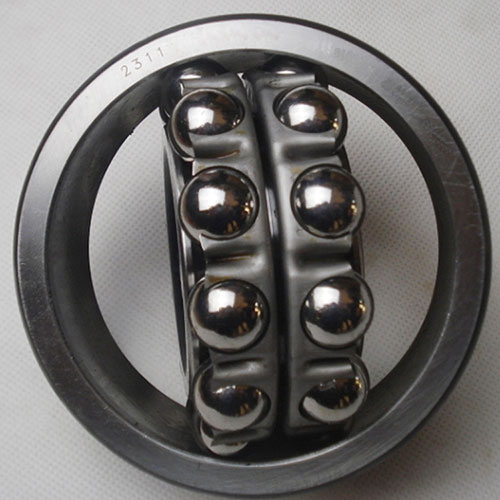
What Are Self-Aligning Ball Bearings?
Self-aligning ball bearings are rolling bearings that utilize balls as rolling elements. Their outer ring features a spherical raceway, which allows for angular alignment within the raceway. This unique design makes self-aligning ball bearings particularly suitable for applications where shaft deflection occurs due to improper installation or shaft bending.
Structural Features
These bearings come in two main bore structures:
- Cylindrical Bore: A standard design that is suitable for the majority of applications.
- Tapered Bore: Can be directly mounted on a tapered shaft. Alternatively, it can be used with an adapter sleeve for installation on a cylindrical shaft.
Regarding cage materials, they typically include steel plates, synthetic resins, etc. Among them, steel plate stamped cages are commonly used. Other types, such as glass fiber-reinforced polyamide 6.6 and brass-turned solid cages, are also available.
Product Series and Standards
The common series of self-aligning ball bearings include series 139, series 130, series 10, series 12, series 13, series 22, series 23, etc. It’s important to note the new and old product series standards. In the new standards, specifications for bearing dimensions, tolerance requirements, and material quality have been updated to meet higher-performance needs.
For example, in some series, the allowable inclination angles and load-bearing capacities have been refined compared to the old standards. When selecting self-aligning ball bearings, make sure to refer to the latest standard documentation to ensure compatibility with your equipment.
Why Choose Self-Aligning Ball Bearings?
Self-aligning ball bearings offer outstanding performance advantages:
Exceptional self-aligning capability to compensate for misalignment issues.
Low friction, enabling high-speed operation with minimal heat generation.
Ability to bear combined radial and axial loads, making them ideal for applications with shaft deflection or installation errors.
These features ensure stable, efficient, and long-lasting performance, significantly reducing maintenance requirements.
Common Applications
Self-aligning ball bearings are widely applied across various industries:
- Electrical Machinery: Ensure stable motor operation by handling shaft misalignment.
- Mechanical Transmission Systems: Maintain smooth operation and reduce noise in equipment like conveyer belts.
- Mining Machinery: Endure harsh working conditions and adapt to shaft deflection.
- Chemical Equipment: Support radial loads and accommodate minor misalignments, ensuring reliable performance.
Self-aligning ball bearings come in two bore structures: cylindrical bore and tapered bore. The cylindrical bore is a standard design suitable for most applications. The tapered bore can be directly mounted on a tapered shaft or used with an adapter sleeve for a cylindrical shaft.